Climbing Mount Everest – Everything You Need to Know from My Experience. Costs, Difficulty Etc
On May 17th, I was successful in my efforts climbing Mount Everest, reaching the summit around 11.40am. Despite training for years, the whole experience was much tougher than I had ever imagined. And I hope this blog post will give a true account of what climbing Everest is like, from the mental struggles, the costs. And, with that, just how important it is that you choose the right operator to climb Everest with (which I definitely did, with Furtenbach Adventures).
The feeling of accomplishment when I stood upon the top of Everest completely outstripped anything I had ever done before, I felt it much deeper than when I finished my journey to every country in the world, or when I finally reached Antigua after rowing the Atlantic, for example. It’s truly difficult to explain.
Now, a couple of months after summiting, the whole thing feels like a story I made up. It’s weird. I almost don’t even want to tell people about it. I’m not sure why. Perhaps the public opinion about it being a “rich person’s plaything”, or perhaps it always sounds like a boastful statement to say “I climbed Mount Everest”. Regardless of that, and public opinion though, I find myself working in my office, or going for a run, and I feel a wave of pride for the experience. And also a wave of relief, knowing that with my personality (and I’m sure many of you too), the call to climb the WORLD’S HIGHEST MOUNTAIN is always there, so now I know it’s done.
So how was climbing Everest? Why climb Everest? How does it all work? I hope this sheds some light on it. What a wild ride it was too.
Table of contents
- Climbing Mount Everest – Everything You Need to Know from My Experience. Costs, Difficulty Etc
- Why Climb Mount Everest?
- Signing up to Climb Everest
- Training to Climb Mount Everest
- Climbing Mount Everest; MY PERSONAL EXPERIENCE
- EVEREST BASE CAMP TREK
- Flying to Start the Everest Base Camp Trek
- An ominous Start toThe Base Camp Trek
- Trekking
- Summiting Lobuche
- Arriving At Everest Base Camp
- Making ourselves at home
- Khumbu Icefall and the First Rotation
- People Dying
- Waiting for a weather Window
- The Summit Push
- Summit Day and THE SUMMIT
- Back down to Base Camp
- And home
- FAQs about Climbing Mount Everest
- The differences between Climbing Everest from the North Side or South Side (Nepal or Tibet/China)?
- How much does it cost to climb Mount Everest
- When is the best time to climb Mount Everest
- Can you climb Mount Everest without joining an expedition
- How hard is climbing Mount Everest?
- Where you scared of dying while climbing Everest?
- How long does it take to climb Mount Everest?
- How long is Summit Day?
- Did you use supplemental oxygen during your climb?
- Can you choose to climb without using oxygen?
- What are the sleeping arrangements on Mount Everest?
- Do you have to sleep with Oxygen?
- Can ‘anyone’ do it these days, with Sherpa and Oxygen?
- What Is the Success Rate of Climbing Everest?!
- Which Company Are You Climbing With?
- What’s climbing Mount Everest Like!?
- Can Anyone Join The Expedition?
- FAQs about Climbing Everest 2023 with me!
- HOW TO JOIN MY FURTENBACH ADVENTURES EXPEDITION

Why Climb Mount Everest?
I guess every person who considers climbing Mount Everest will have their own reason. I can only speak for myself.
People ask me often if it was something from my childhood that inspired me to climb Everest and climb the 7 summits, and it wasn’t. Growing up on welfare, with just my mum and my sister, climbing Everest was too big a thing to dream of. Anyone who grew up working class can probably understand. Just going on an airplane is a dream and a goal when you’re struggling.
Stuff like climbing the world’s highest mountains is only for old, rich, white English or American guy. With the right accent, the right surname, the right education. Posh people, with a big house in London. It’s all we ever saw on TV growing up. And that just feels like a million miles away from the kind of life you can imagine.
It wasn’t until I broke through my self-belief limitations, in my 20s, when I started realising ANYONE CAN DO ANYTHING. Including me. I had set a goal of 100 countries by 30. Every country by 35. Every country and 7 summits by 40. Now I realise that giving kids true belief that their hard work and discipline will allow them to do anything is so important. I’ll work daily to instill that into my future kids. For me, it was a personal journey. And it delayed that self-belief. But better late than never.
So why for me? For a start, now I believed I could. I knew I could. I just had to commit. Also, I found out that no-one in history had ever completed the ULTIMATE EXPLORERS GRAND SLAM. That’s every country PLUS north and south pole, PLUS the 7 summits. So why not be me? And with that, I began climbing smaller mountains about 5 years ago, with a view to get to climb Mount Everest too. And the ball was in motion.

Table of contents
- Climbing Mount Everest – Everything You Need to Know from My Experience. Costs, Difficulty Etc
- Why Climb Mount Everest?
- Signing up to Climb Everest
- Training to Climb Mount Everest
- Climbing Mount Everest; MY PERSONAL EXPERIENCE
- EVEREST BASE CAMP TREK
- Flying to Start the Everest Base Camp Trek
- An ominous Start toThe Base Camp Trek
- Trekking
- Summiting Lobuche
- Arriving At Everest Base Camp
- Making ourselves at home
- Khumbu Icefall and the First Rotation
- People Dying
- Waiting for a weather Window
- The Summit Push
- Summit Day and THE SUMMIT
- Back down to Base Camp
- And home
- FAQs about Climbing Mount Everest
- The differences between Climbing Everest from the North Side or South Side (Nepal or Tibet/China)?
- How much does it cost to climb Mount Everest
- When is the best time to climb Mount Everest
- Can you climb Mount Everest without joining an expedition
- How hard is climbing Mount Everest?
- Where you scared of dying while climbing Everest?
- How long does it take to climb Mount Everest?
- How long is Summit Day?
- Did you use supplemental oxygen during your climb?
- Can you choose to climb without using oxygen?
- What are the sleeping arrangements on Mount Everest?
- Do you have to sleep with Oxygen?
- Can ‘anyone’ do it these days, with Sherpa and Oxygen?
- What Is the Success Rate of Climbing Everest?!
- Which Company Are You Climbing With?
- What’s climbing Mount Everest Like!?
- Can Anyone Join The Expedition?
- FAQs about Climbing Everest 2023 with me!
- HOW TO JOIN MY FURTENBACH ADVENTURES EXPEDITION
Signing up to Climb Everest
As I slowly moved my way higher through the 7 summits, from Mount Elbrus, to Aconcagua, to Denali. It was all heading in one direction, climbing Mount Everest. Every mountain I tackled, all I could think about was finally signing up to climb the big one. It carried such a sense of trepidation too, of dread even. Not only was it going to be super difficult of course, but also it carried the risk of death. And then of course was the cost too.
I rowed across the Atlantic in 2021, and it was literally 2 weeks after finishing that that I finally committed and signed up. It was a scary thing to truly commit to. But, like all things in life, if not now, then when?
Of all the people who ever achieved anything, I thought to myself, they too had to at one point make the choice. No turning back. Commit physically, emotionally and financially. So I did that. With a view to climb Denali in 2022, and then finally, in 2023 tackle Everest. It was set in stone.

Choosing Furtenbach Adventures
I wrote a whole blog post with my Furtenbach Adventures Review so you can check that out. It basically says how delighted I am I chose Furtenbach and why.
I was going to initially go with a UK operator, but I had heard a few grumbles about group sizes being too big. So I moved on. Also I used Jagged Globe for Denali and they were awful, so I skipped them too! Then, feeling the pressure of the price of Everest, I was going to use a local, Nepali operator. And again, that was ruled out pretty quickly. High death rates, complaints about lack of oxygen canisters at high altitudes, and a general lack of health and safety, mean that despite it being $15k cheaper, it didn’t seem worth risking failure, nor my life, to save that money.
I kept coming back to Furtenbach Adventures. A boutique Austrian company, who got a little mountain fame from having the highest success rate on Everest. That sung to me! Then, it transpired that they also had the best base camp at Everest too, so we could be comfortable amidst all the suffering. I called them, spoke with Lukas the owner, and it was a deal done. Fast forward to now, writing this blog post from the comfort of Thailand with my climbing certificate framed on the shelf, of all my travel experiences, choosing to climb with Furtenbach Adventures was one of the best decisions of my life.

Training to Climb Mount Everest
So I signed up in 2021, with an April 2023 start date. I had Denali in 2022 so I had to be fit for that anyway.
Alos, I try to stay fit through the year, but Everest is different. I wanted to be in the best shape of my life. Having a date 22 months in the future meant I could focus on exactly the type of training I needed, and work towards that.
No last-minute rushes like I normally have to do (like my Malaysia to Myanmar cycle, my 200km ultra Chiang Mai to Chiang Rai, the Marathon Des Sables, or the North Pole Marathon). So I got to it.
I lived in Chiang Mai, Thailand where I recently just built a house. In the north of Thailand, there are endless mountains and hills. And many just 10 minutes from my house. Including Chiang Mai’s iconic Doi Suthep, the mountain which the Buddhist temple sits a top of. My training mostly consisted of alternate work-outs of:
- A 50km cycle from my house to the temple and back. Up hill.
- Drive to the bottom of the mountain and run the half-marathon+, 23km up and down, the temple. Twice weekly.
- If my friends joined, I would hike The ‘Monk’s Trail’ up to the mountain instead. Normally multiple times, where they’d join me on my final ascent. I was feeling so fit that it was tough for normal people to join my actual hikes/runs, so they’d join for round 2 or 3.
- Weight training in my home gym.
I would generally rotate these, doing each 2 times a week. I also travel a lot both for fun and for ‘work’ where I run trips to cool places. That’s tough to keep in shape. I’d try to run 10km each day when I was traveling, but if I managed to do that even twice a week, I’d accept it.
I trained like this for over a year. So by the time we got into Q1, 2023 I was already as fit as I’d ever been. A ramped it up in Feb and March, so by the time Everest was a month away, I truly felt physically ready.

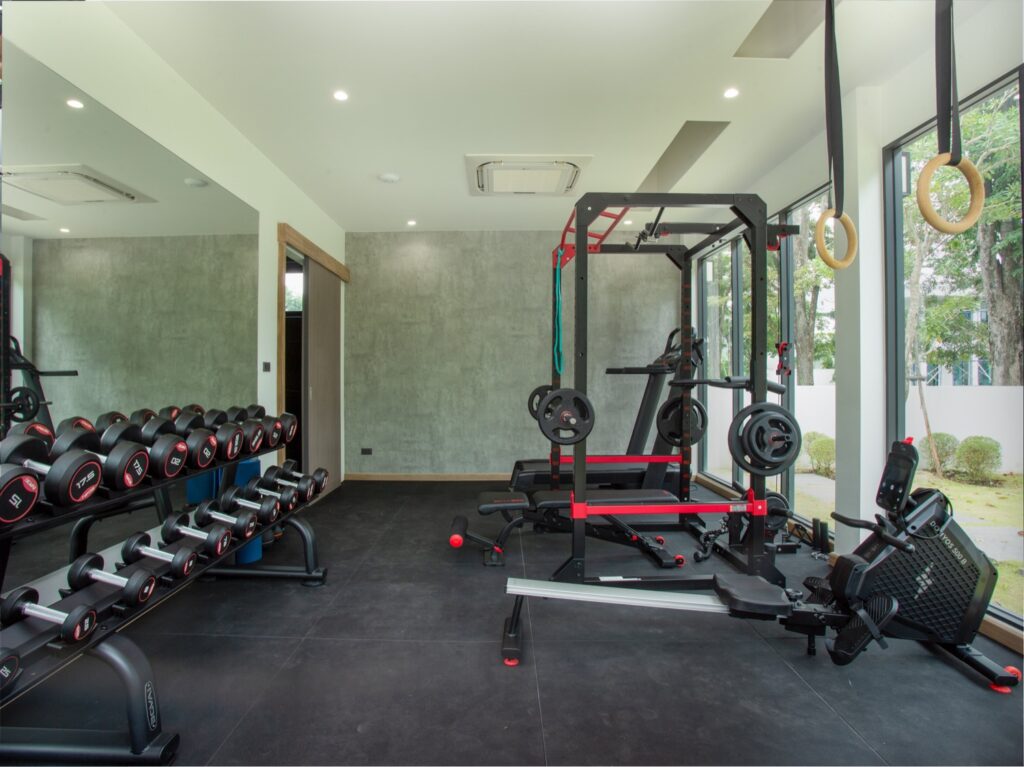
Hypoxic Training
The final piece of the jigsaw for training was hypoxic training. Obviously when you climb Everest physical fitness is paramount. But something you can’t train for, normally, is the lack of oxygen.
However, times are changing, and now technology does allow us to train for the lack of oxygen. Now, you can sleep each night in a tent that restricts your oxygen, mimicking the idea of being at a higher altitude, and getting your body ready for that. Multiplying your red blood cells, the same way that the body does naturally when you’re up Everest.
As part of Furtenbach Adventures package, they include this ‘Hypoxic Training’. They send you a machine, a tent, and give you daily goals each day. How many hours, at X amount of oxygen. They aim to have you within the tent for over 200 hours in the month leading up to Everest. Meaning you’re already amongst the most acclimitsed people on the mountain. So we did that.
A worrying start
My tent had an issue sadly, which meant I lost the first 2 weeks of the 4 week sleep schedule. Instant stress. Catasrophising, as is my toxic trait. “Everyone else is going to be so ready, and I’m screwed” Blah blah. I was in a bit of a mental tailspin.
I got my new tent with just 14 days before my flight to Nepal. Meaning I had to ramp it up intensely for the 2 weeks before Everest to ‘catch up’. That meant a lot of restless (sleepless?) nights with not much oxygen! Normally you reduce it gradually. But being so behind schedule, I jumped in half way through the schedule and instantly slept at 3000+ metres altitude.
Also, my poor wife had to sleep beside me, with this machine ‘breathing’ loudly each night, and me tossing and turning. Each morning I’d check my 02 levels in my blood oxygen, and slowly it was working.
I managed to catch up a bit I guess. And fast forward to trekking to Base Camp, amongst the people who hadn’t done the Hypoxic Training, and we were miles ahead. I would highly recommend this to everyone climbing Mount Everest, or any mountain really. Or, for that fact, any training at all.




Climbing Mount Everest; MY PERSONAL EXPERIENCE
The day to fly to Nepal was upon me. Quick flight from Chiang Mai to Bangkok, then Bangkok to Kathmandu beckoned. 2 hue duffel bags, and 40kgs of gear and I was good to go.
The same day I was due to fly though, I had a crypto company reach out to me and ask me did I want to be the first person ever to mint an NFT on the summit of Everest. Life is weird. I told them that I was already pretty scared for my life, and the thought of having to get my iPhone on the summit when I’d be freezing, at risk of losing my fingers (and my life) so I wasn’t keen. They said “I’ll send you $10,000USD (in Ethereum) right now, this minute”. Ermm. Ok deal. PING. I received it. Wtf.
I told them that my iPhone battery would probably die on the summit, so I’d need a couple of back-ups. “Buy them in the airport, send us the receipt, we’ll reimburse you”. So about to fly, I went and bought 2 brand new iPhones, a load of battery packs etc and sent a photo of the receipt. $2,500 or so. And with that, another PING. And I had $2500 more in Ethereum. Cheers boys. And off I went to board the flight.

Arriving in Nepal
It’s just a 6 hour flight from me to Kathmandu. I landed, and the Furtenbach team met me at the airport. A chain of flowers as a blessing, and checked into the hotel. I would have 3 nights here before starting the Base Camp trek section of our climb. With every mountain you climb, those last couple of days of comfort are kind of torture. Stress, worry and fear. Is my gear ok? Am I doing the right thing? Last minute shopping, where you’re convinced you need a better air mattress and a few more carabiners. Before you know it, another $500 down the pan.
Meeting the Team
I also then met the team. The lead guide, Dave, an American who had climbed Everest 2 times previously. Our lovely Austria doctor, and Argentinian head chef. And the 4 climbers in the team – myself, my future tent-buddy Colin (legend of a guy), Mark an American ultra runner (another absolute legend of a guy) and a Pakistani female doctor.
Meeting everyone was fun. And it also goes hand-in-hand with finding out how fit/strong/experienced they are. Terrified that I’d be the weak link in the climbing group! None of us were what I’d call hardcore mountaineers, but Mark, Colin and myself had all dedicated 6 months to a year of legitimate training, and were ready to suffer. We were as ready as we could be.
We had an interesting moment at dinner, which I’ll come back to later though. Dave, our lead guide, went on a monologue about American Politics. Something I could have done without while about to embark on climbing Everest, truth be told. As our lead guide, we are all super aware that we can’t risk pissing him off. He ultimately will be the one to make the call if we’re struggling, and can’t make the summit. Sending us back down.

No virtue signalling at 8000m
As we continued to rant about how Conservatives are evil, and the democrats are better, smarter people. As more of a libertarian, finally I couldn’t bite my tongue anymore when he announced “We all know women are better than men anyway. Stronger, can suffer more, more resilient, dedicated, smarter. That’s just facts“. So much for American equality! I had to push back. As a child of a single mother, with a sister and a grandmother growing up, with no men in my life, I told him I believe in equality actually. And I can’t stand around and hear all this men-bashing. Nor do I believe it to be true that women are stronger and fitter than men. Woke point-scoring is so common place in the US these days, that I think they believe the rest of the world drinks the Kool-aid too. They don’t.
Fast forward to summit day, I was exhausted, and therefore did bite my tongue as an equally exhausted Dave had an issue with his oxygen mask freezing, and some women in front of him slowing him (and me) down on our summit push. “It’s always f*cking women. Always slowing people down. Life and death. Every single time it’s a women. Some people have no fucking place on this mountain when lives are at risk“. I didn’t have the energy to speak. I did raise a wry smile and eyebrow though. No virtue signalling at 8000m I guess. Haha.

EVEREST BASE CAMP TREK
Flying to Start the Everest Base Camp Trek
Climbing Everest is a 2 month endeavour. And the first 2 weeks of that is a lovely Everest Base Camp trek. The very same Everest Base Camp trek that I, and many thousand other people, do as a fun holiday trekking in the Himalayas.
If you don’t know, Everest Base Camp marks the end of fun trek. That’s where the people planning to tackle Everest Summit set-up camp for the next 5 or 6 weeks as they organise logistics and climbing. When you do the standard Everest Base Camp trek, you reach the start of the camp and see the ‘village’ of tents. And then you turn around and go back. The 2 week trek essentially brings you to the ‘bottom’ of Mount Everest.
I could not recommend the Everest Base Camp trek highly enough. It’s gorgeous, not-too-hard. You sleep in real beds, no tents necessary. Proper food, even beers available the whole way up. Anyone with moderate fitnes can do it without training. And if you’re a bit out of shape, then 3 months of exercise should get you up to speed. IT’S A BEAUTY! The most iconic trek in the world I reckon. Do it!

An ominous Start toThe Base Camp Trek
To save time, and already being somewhat acclimated with our altitude tent training, we planned to helicopter past the first stop on the usual base camp trek, Lukla. And instead went straight Phakding.
The morning of the helicopter flight was nerve wracking. I felt physically sick as I was about to embark on one of the biggest goals and dreams of my life.
We arrived at the airport early in the morning for our helicopter. But something was wrong, and we ended up waiting for 2 or 3 hours. With no information. Finally we got summoned to go and wait for the helicopter outside. Where we waited on the tarmac for another hour. Nerves building more and more.
Suddenly an ambulance pulled up beside us. Oh God. And a helicopter landed. Our helicopter apparently. Soon a team of people arrived with black sheets, and the ambulance was sent away, with a different vehicle arriving. We soon realised our helicopter had been used to transport a dead body from the mountain. A worrying sign, if you’r einto that stuff. Once the body was put in the vehicle, the pilot gave a thumbs up and we were to board 2 minutes later. On the poor dead mans chopper.
A quick ‘rock, paper, scissors’ was played, with the loser having to sit in the dead man’s seat (sorry, and thank you Mark) and we were off. I’m not superstitious, but this just felt like an awful way to start the trip.
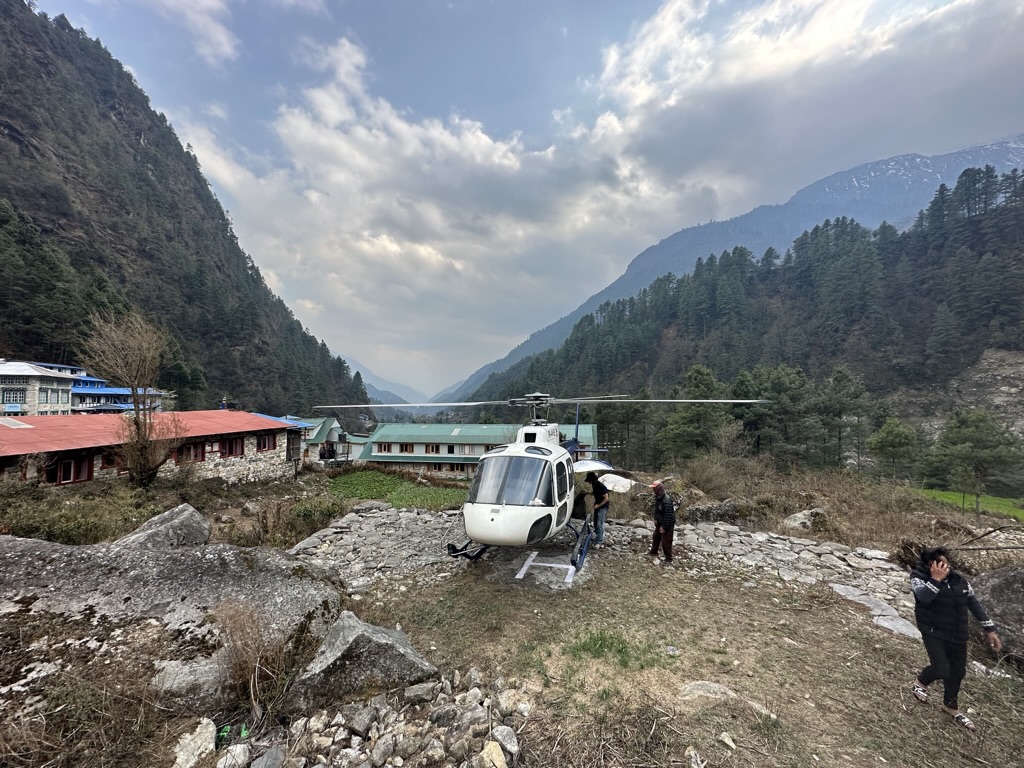
Trekking
We landed in Phakding, and took the day off, sleeping there. The next 10 days or so would look like this:
- Phakding (7th April, 1 night @ 2500m)
- Namche Bazaar (April 8 & 9, 2 nights @ 3400m)
- Phortse (April 10th, 1 night, 3900m)
- Pangboche (April 11th, 1 night @ 4000m)
- Dingboche, (April 12 & 13, 2 nights @ 4300m)
- Lobuche Town (April 14 & 15 @ 5000m)
- Lobuche low camp (April 16 & 17 @ 6100m summit)
- Lobuche Town (April 18 @ 5000m)
- Everest Base Camp ( April 19 @ 5364m!! 5 or 6 weeks?)
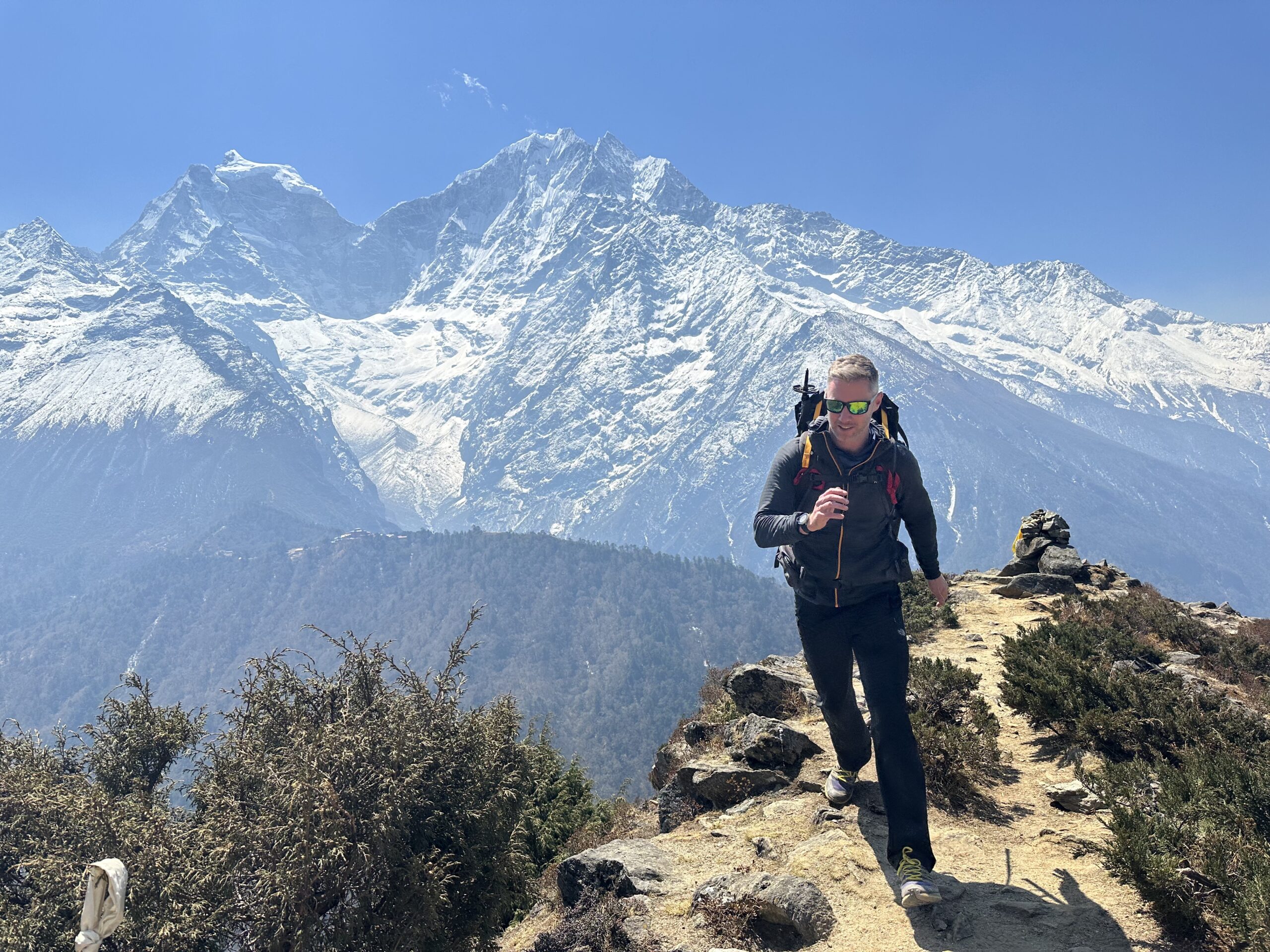
Each day of the Everest Base Camp trek only involves a few hours of hiking/trekking. As you slowly make your way up from 2000m or so at the start to roughly 5,500m at Everest Base Camp. But this part of the Everest Expedition is also the last bit of chill comfort I was going to have for the next 2 months.
Sleeping in real beds. Meeting other hikers. No risk of death, or failure. And the trek is quite simply breathtaking. Huge suspension bridges. Stupas and prayer flags everywhere. Delicious food along the way. And stunning mountain views. It was on Day 3 of the hike that I first spotted Mount Everest. God did it ever look far away. And cold. And steep. And high. I took a second to soak it in. I had once done the Everest base camp trek as a 23 year old, way back in 2007. To be here again, as a warm-up to tackle the biggest mountain in the world. It was surreal. And with that first glimpse of Everest, it didn’t seem real that I could potentially be standing atop the world’s highest mountain in a matter of weeks.

Summiting Lobuche
Where other standard EBC treks head straight to Base Camp and then back down, we deviated just before reaching Base Camp. Climbing Everest is so long because you go half way up the mountain, to get used to the lack of oxygen and allow your body to change. And down. And then up again, and down. And again etc etc. This normally means you have to repeatedly go through the infamous ‘Khumbu IceFall‘. The scene of the famous wobbly metal ladders and the sheer drops between the glacier beneath you.
To minimize having to do it so many times, Furtenbach choose a different itinerary. So before reaching EBC, we head to Lobuche mountain. A 6,100m metre peak not far away. We aimed to summit it as quickly as possible and begin to push our bodies into the area they need to be for the expedition ahead.
We slept in Lobuche town and then set off to set-up Lobuche low camp early in the morning. Finally it felt like we were ‘moutain climbing’. Tent perched on hard rock, uncomfortable, cold. And nerves running through my mind. Imagine if this 6,000m peak is tough, i thought? How the hell will I tackle 8,800 next month?!

Colin and I bunked in together. Chatted about life. I felt blessed to have such a great tent ment, one I’d stick with for the next 6 weeks or so. I’m a ADHD, touching on autistic guy. 100 miles an hour. Thinking about a thousand things at once. Ambition, and optimism, instantly followed by catastrophizing and misery. And I’m so grateful for Colin’s calm, accountant, low key energy to balance me out. Although I do spare a thought for him. As he was helping me hugely with that counter weight, was I doing the opposite for him?
Anyway, the next morning we tackled Lobuche up to high camp. The sun was shining bright. Originally we had planned to set up high camp, have a sleep, and then attempt to summit around 4 or 5am the following morning. But our group was strong, so upon reaching high-camp, we simply skipped passed it and headed straight for the summit.
And up we went. From 5200, to 6000+ or so. The second highest I had ever been, but still a mindblowing 2800m lower than Everest. And already I could barely breathe!
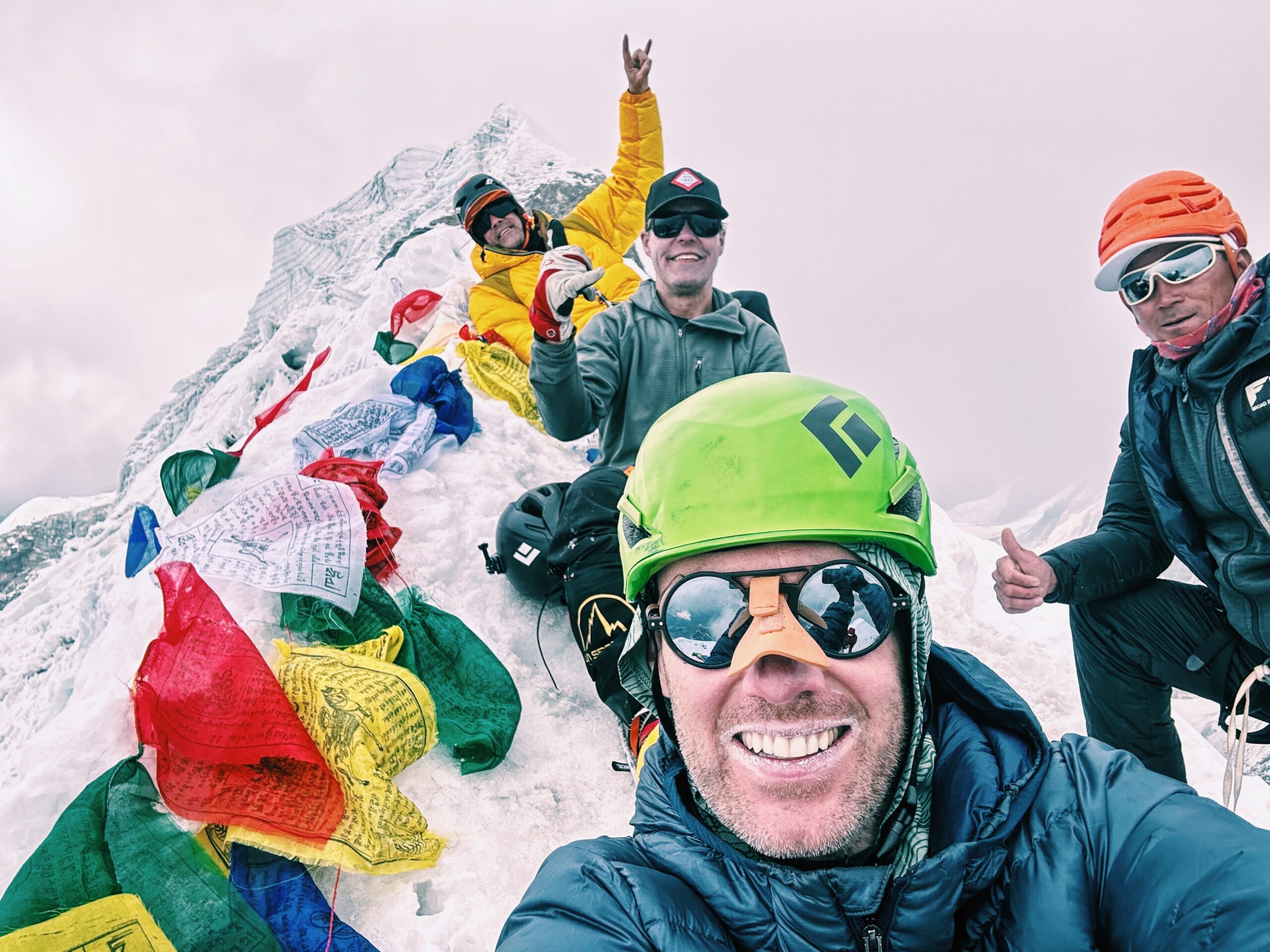
Arriving At Everest Base Camp
April 19th, 2023.
Making ourselves at home
Khumbu Icefall and the First Rotation
People Dying
Waiting for a weather Window
The Summit Push
Summit Day and THE SUMMIT
Back down to Base Camp
And home
FAQs about Climbing Mount Everest
The differences between Climbing Everest from the North Side or South Side (Nepal or Tibet/China)?
i chose to climb from the Tiber side, but China didn’t reopen in time (COVID!) so I climbed from Nepal side in the end.
Traditionally, most people climb from the Nepal Side. It’s where Tenzing Norgay and Edmund Hillary first summited Everest, and where the famous ‘Everest Base Camp’ trek brings you to the bottom of the mountain. I always assumed I’d climb from this side, to be honest. To be honest, I knew nothing about any other options!
I spoke to Lukas and he strongly recommended I go from the Tibet side. Why?
- The north side (Tibet) is objectively the safer ascent route, with a lower death rate (a bonus of course).
- The last camp is higher (8300m) resulting in a shorter summit stage. The toughest bit, therefore, is slightly easier.
- A more comfortable and luxurious basecamp due to road access. This is MASSIVE, as it’s where we’ll spend most of our time during the expedition. To be comfortable, online, chill etc there will mean morale and physical health will be at peak condition ready to summit.
- NO KHUMBU ICEFALL! If you know anything about summiting Everest, one of the worst parts is the constant back and forth through the deadly Khumbu Icefall. Right after basecamp, you have to go through an ice area full of avalanches and crevasses. Most expeditions require you to go back and forth up to 6 times. Crazy. Going from the North side means you avoid this altogether.
- From Tibet, it’s slightly more technical with more cliffs, and so the descent can be a touch trickier too.

How much does it cost to climb Mount Everest
Isn’t it cheaper to go with a local Nepali climbing operator?
Yes it is. It can be as ‘cheap’ as $35k with a local operator. However, and no-one says this online due to fear of backlash, so I will. Nepali operators are notorious for cost cutting. Some try to make their clients fail early by pushing them hard, as they didn’t pay for enough oxygen. Deaths rates are double, triple, more, than the European operators.
Long story short? If you ask me, it’s better to wait a year, save a chunk more money, and go with the safest, best operator.
When is the best time to climb Mount Everest
Can you climb Mount Everest without joining an expedition
How hard is climbing Mount Everest?
Where you scared of dying while climbing Everest?
How long does it take to climb Mount Everest?
How long is Summit Day?
Did you use supplemental oxygen during your climb?
Can you choose to climb without using oxygen?
What are the sleeping arrangements on Mount Everest?
Do you have to sleep with Oxygen?
How about toilets and showers on Everest?
What route did you take to reach the summit?
Can ‘anyone’ do it these days, with Sherpa and Oxygen?
“I heard it’s easy these days and anyone can pay and climb it” Nonsense. Absolute nonsense. It’s the hardest thing I’ve ever done. I’ve rowed oceans, cycled 2000km across countries, ran 250km through the Sahara, and this was much, much harder than any of that.
We all saw the photo a couple of years ago of people ‘queuing to get to the summit of Everest. That was a perfect storm. The weather window (the time when you can try to summit) had closed so narrow that pretty much the entire mountain had to summit on the same day, causing a line of people. Rest assured, anyone who has made it to 8,000m+ is a beast.
One who has sacrificed so much to be there. Training, finances, risk of death. Watching people sit at home and criticizing is nothing short of hating. People who didn’t have the courage to chase their dreams, so now carry schadenfreude for those that do. Don’t be them.
What Is the Success Rate of Climbing Everest?!
About 35/40% (bear in mind most people who have made it as far as signing up to do it are beasts though).

Which Company Are You Climbing With?
The million-dollar question. Or rather the £50,000 question. I’ve used a few different companies to help me climb mountains over the last few years. I particularly love Elbrus Tours who helped me climb both Mount Elbrus in Russia (Europe’s highest mountain) and Aconcagua in Argentina. I used a great company for my Mont Blanc climb in France too. And I’ve got a 3rd company I’m booked with Denali next year too. All great. But Everest? Everest is different.
For a start, it’s super expensive. This means I pretty much can’t afford to fail. I will be building a new family life in Thailand, so to fail Everest and then to drop another big chunk of cash isn’t viable for me. I have to succeed.
So the main driver for me is the likelihood to summit on my first try. Of course, with the weather etc, nothing is guaranteed. But I can control the controllables. That means choosing the company with THE highest success rate in summiting Everest. In fact, the guys I’m choosing have the most highest success rate with summiting everest EVER.
Equally then I’d rather spend an extra $10k or so with a ‘better’ operator that increases my chances of summiting. Than cut corners, find a cheaper operator, and then fail! Only to have to pay again. Suddenly the ‘cheaper’ operator isn’t so cheap when you have to go back the following year to try again (and pay again!).
With all that in mind, I’ve been researching Everest guides and companies for the last few years. And pre-Covid I was chatting to many of them. Working out the best fit for me. I finally, FINALLY, found a relatively small operator. Run by the mountaineer himself actually. Lukas Furtenbach started a small operation called Furtenbach Adventures. The thing to note about Furtenbach Adventures?
100% SUCCESS RATE ON BOTH TIBET AND NEPAL SIDE OVER THE LAST 3 YEARS
Once I saw that, the price was secondary. So yeah, I then spoke to Lukas on the phone and had originally planned for 2022. Then COVID, other trips delayed etc and finally we are here with 2023 booked!
Why Did You Choose Furtenbach Adventures
I was originally going to go with 2 of the biggest companies (I won’t mention their names, but they’re famous!). And spoke to them both. But in the end, I decided not to because I felt their groups were too big, and also that they were cost-cutting to make themselves more available to the mass market. I prefer to pay a little more, and know that my chances to summit are higher. Also, I want a small group and a group that has been analysed one by one to make sure we are all ok to attempt it.
Then, like I said above, I discovered their 100% success rate, and I was done. After reading all the furtenbach adventures reviews, Furtenbach Adventures it is!
And then there is there hypoxic pre-acclimatization. The reason these guys have such a high success rate is that their expeditions are shorter, and you pre-acclimatise so you’re ready for the high altitudes, where other operators aren’t. Once signed up, a few weeks before the expedition, you get a special tent to sleep in at your home. That trains your body to work ‘normally’ with less oxygen. It means that you can spend less time on the mountain, reducing the chances of getting sick or anything going wrong AND you can perform better/fitter/stronger to get you to the summit. AMAZING!

For the record, after reading furtenbach adventures reviews, THIS IS THE EXPEDITION I’VE SIGNED UP FOR:
What’s climbing Mount Everest Like!?
Good question! I haven’t done it yet, but I have read every book, seen every documentary, and watched every movie! And if you’ve been following me recently on instagram.com/onestep4ward you’ll know I’ve spent quite a bit of time on mountains over the last 2 or 3 years. So what is it like?
Well, reaching the highest point on the planet isn’t easy, we can all guess that. Normally it takes about 2 months from start to finish. However, with Furtenbach Adventures, because they use that amazing hypoxic pre-acclimatization at home, they do the whole thing in about 5 or 6 weeks.
Mount Everest sits on the border between Nepal and Tibet, and because of that, you can climb from either side. Both have their pros and cons, but I’ll be climbing from the Tibet side. I’ll explain why below.
On both sides, you set up ‘home’ at basecamp. This is actually pretty comfortable, and we’ll be spending most of our time here. From there, you shuttle up and down the mountain. Getting use to higher and higher altitudes, camping higher, returning to base camp. Recover. And go again. This time higher, camp again at a higher camp. And return to base camp to recover. Until finally, you wait for the weather window and you go for the summit. It gives me goosebumps even writing that. Wow. From high camp 3 and 4, we’ll be using oxygen to help us function at such high altitudes. With the schedule of my expedition, we actually have 2 attempts at the summit factored in, which is a huge thing for me, and again why the success rate is so high with these guys.
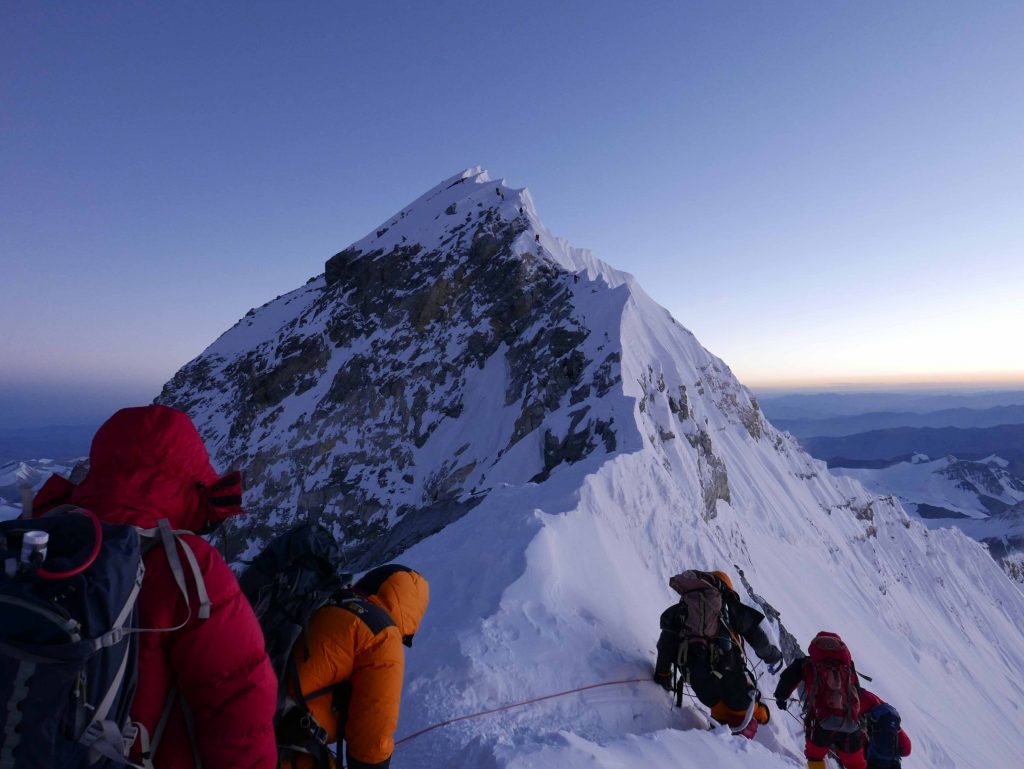
Can Anyone Join The Expedition?
Within reason, yes.
The beauty of the climb being almost 2 years away is that pretty much everyone has time to get the experience and fitness they need to climb Everest. If you’re keen, drop me an email and we can chat about whether you can do it or not. I’ll be climbing a couple of mountains in 2022 that should cover you ‘experience-wise’ too, so you could also join those to get yourself ready.
Everest isn’t a technical climb. But equally, it can’t be your first mountain! You still need to know a bit about mountains, and how your body reacts at altitude, and about which gear and equipment is best. But 2 years is enough time to get all that sorted.
FAQs about Climbing Everest 2023 with me!
It ranges from $30,000USD to over $100,000USD. It’s pricey, no doubt about that. But then again, it is the highest mountain on earth!
For the expedition that I’m going on it’s €60,900 (£52,500GBP / $74,400USD).
Normally 2 months, for my expedition it’s April 13th to May 24. So that’s 42 days.
It’s not easy, that’s for sure. The death rate for Everest is 1-3% BUT that number is much lower if we look just at the last 10 years with better gear, health & safety etc. But, for me at least, one should be in the best shape of their life when taking on the world’s highest peak. Let’s do it!
It categorically cannot be your first mountain (and in fact, they won’t take you if it is!). I’d recommend having climbed AT LEAST 2 or 3 mountains first. A good way to do it would be an easy one, like a Kilimanjaro (I’m going in November if you want to do it!), then either Elbrus or Mont Blanc (both quite cheap) and then Aconcagua or Denali. That should get you ready.
Yes, but highly unlikely with modern conditions.
Quite a lot of clothing, not so much hard-core ‘climbing’ gear. I’ll publish a full packing list in the coming months, but for example, I don’t have that much stuff and yet the only thing I need that I don’t have is the full summit suit (The big puffy onesie). The rest is just normal hard-core outdoor gear for sub-0 temperatures.
The company I’m going with can also help with the gear of course (either to rent or buy).
For me, I wouldn’t. I guess it comes down to your own level. If you’re a hardcore mountaineer, you can get your permit and gear for $15k or so and go. But for me, I want a expert guide. 1-1 sherpa for summit. Oxygen at high camp AND the highest chance to summit imaginable. For me, that comes through the expedition I’ve chosen. It’s personal preference at the end of the day.

HOW TO JOIN MY FURTENBACH ADVENTURES EXPEDITION
Firstly, think long and hard. It’s expensive, it’s difficult, it’s cold. You have to train for at least 6 months beforehand, and if you haven’t already, you’ll have to climb a couple of mountains in the next 22 months to get yourself ready.
If you’re serious, then email me! Let’s do it! I have 2 friends already who are pretty set on it (looking at you Bryan and Anthony!), and you guys are welcome to join too.
Anyone who joins me on our Everest 2023 expedition, can book with the same guys here: https://www.furtenbachadventures.com/en/book-now/?id=3023&buchungscode=EVERN23
Just state under “Remarks” that you wanna join our group on the expedition by writing “OneStep4Ward” or similar.
Payment
Deposit Payment is made due upon receipt of the invoice and is of 20% of the total price (12,180Euro). Then we all must pay the rest of the balance 20 days prior to departure (in March 2023). Thankfully, that’s a long way away!
Visas
Pretty simple. Even though I’m climbing from the Tibet side, I’ll be starting in Kathamndu. The Nepali is visa on arrival for most nationalities, then the Tibet & China stuff is taken care of by the company
After that?
Starting around January 2023 all team members will receive regular “Team info emails” on the organization progress and on further steps to take for preparation. It is recommended to do a pre-acclimatization in a hypoxic tent for 4 weeks before start of the expedition, which is not absolutely necessary, but recommended, as we witness higher fitness level after doing so.
Depending on where the team members live and if it’s possible to ship or rent a hypoxic system in the country, we will organize that (EU and USA can usually easily be organized; for other countries it’s more difficult). But that will be taken care of in the final phase of preparation in 2023 as well. LET’S DO IT!
Make sure you organise your Mount Everest Insurance too.
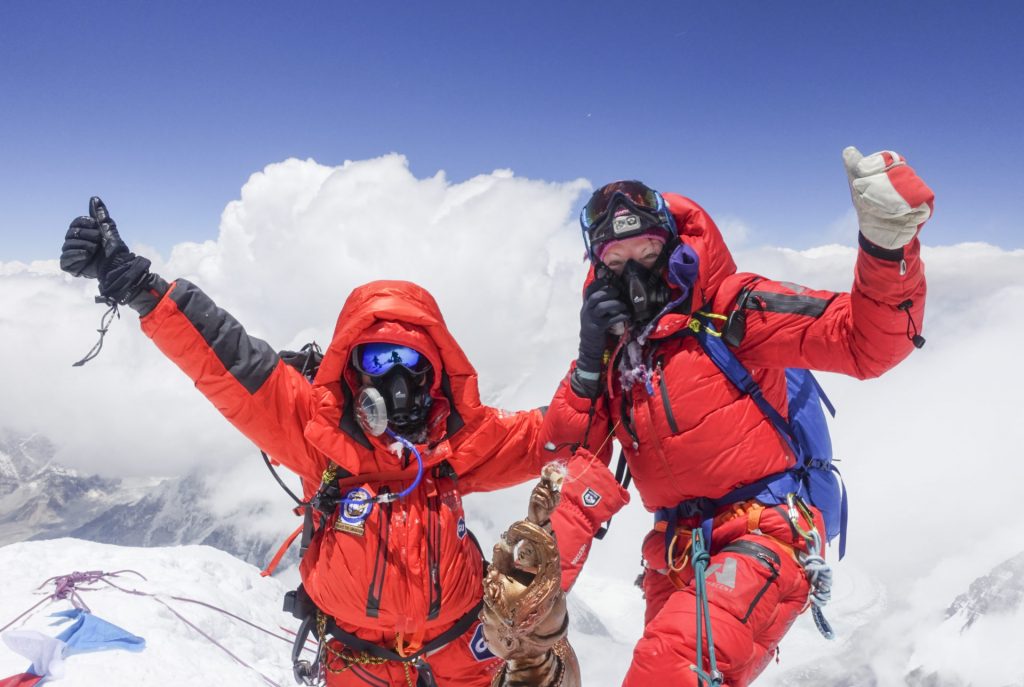
Remember, never travel without travel insurance! And never overpay for travel insurance!
I use HeyMondo. You get INSTANT quotes. Super cheap, they actually pay out, AND they cover almost everywhere, where most insurance companies don't (even places like Central African Republic etc!). You can sign-up here. PS You even get 5% off if you use MY LINK! You can even sign up if you're already overseas and traveling, pretty cool.
Also, if you want to start a blog...I CAN HELP YOU!
Also, if you want to start a blog, and start to change your life, I'd love to help you! Email me on johnny@onestep4ward.com. In the meantime, check out my super easy blog post on how to start a travel blog in under 30 minutes, here! And if you just want to get cracking, use BlueHost at a discount, through me.
Also, (if you're like me, and awful with tech-stuff) email me and my team can get a blog up and running for you, designed and everything, for $699 - email johnny@onestep4ward.com to get started.
Do you work remotely? Are you a digital nomad/blogger etc? You need to be insured too.
I use SafetyWing for my digital nomad insurance. It covers me while I live overseas. It's just $10 a week, and it's amazing! No upfront fees, you just pay week by week, and you can sign up just for a week if you want, then switch it off and on whenever. You can read my review here, and you can sign-up here!








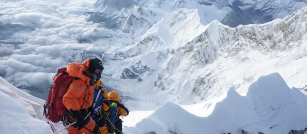




 As you know, blogging changed my life. I left Ireland broke, with no plan, with just a one-way ticket to Thailand
and no money. Since then, I started a blog, then a digital media company, I've made
more than $1,500,000 USD, bought 4 properties and visited (almost) every country in the world. And I did it all from my laptop as I
travel the world and live my dream. I talk about how I did it, and how you can do it too, in my COMPLETELY FREE
Ebook, all 20,000
words or so. Just finish the process by putting in your email below and I'll mail it right out to you immediately. No spam ever too, I promise!
As you know, blogging changed my life. I left Ireland broke, with no plan, with just a one-way ticket to Thailand
and no money. Since then, I started a blog, then a digital media company, I've made
more than $1,500,000 USD, bought 4 properties and visited (almost) every country in the world. And I did it all from my laptop as I
travel the world and live my dream. I talk about how I did it, and how you can do it too, in my COMPLETELY FREE
Ebook, all 20,000
words or so. Just finish the process by putting in your email below and I'll mail it right out to you immediately. No spam ever too, I promise!
